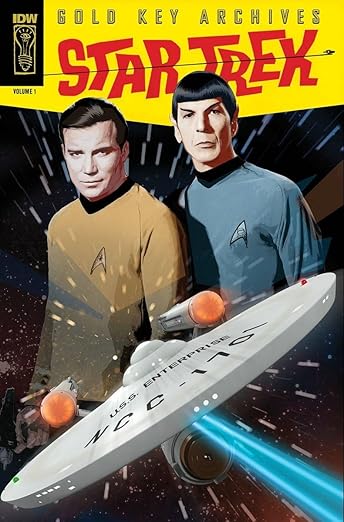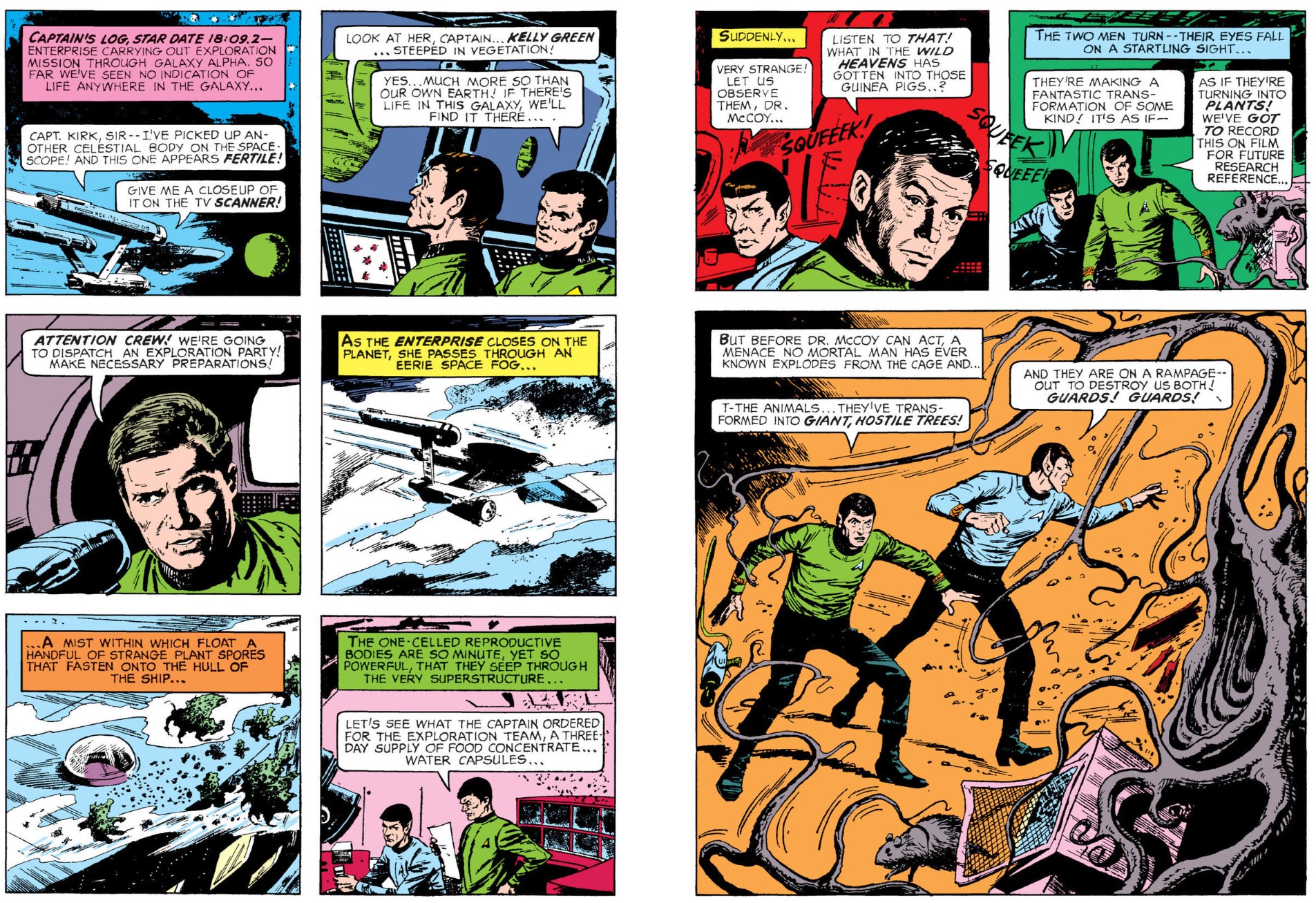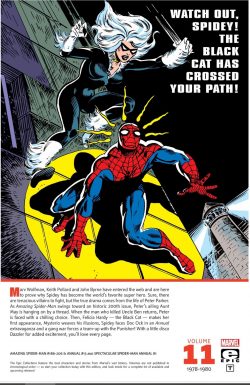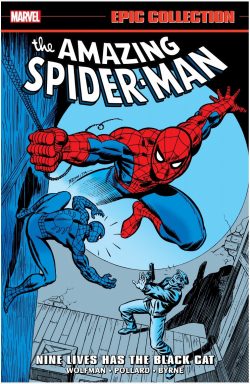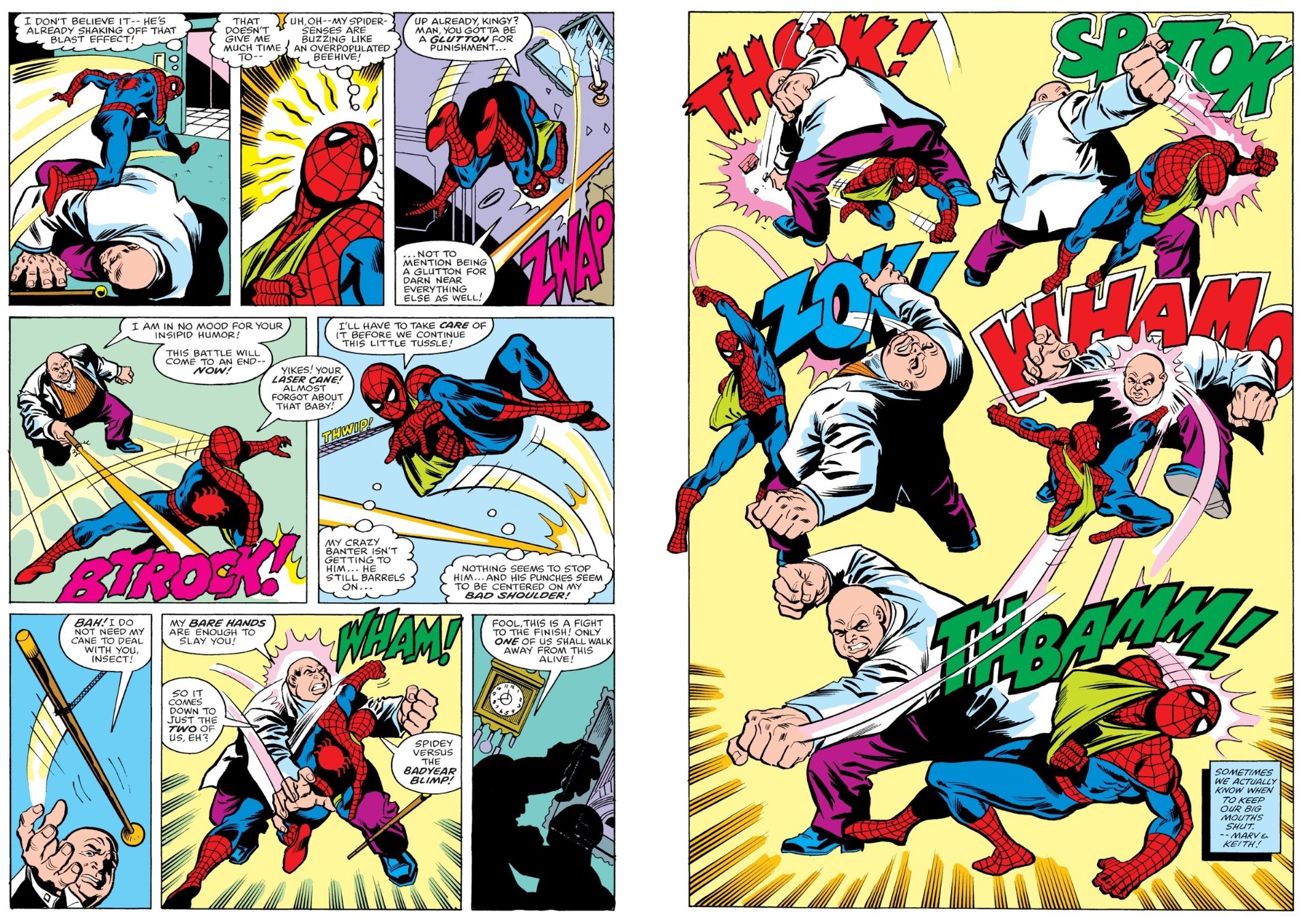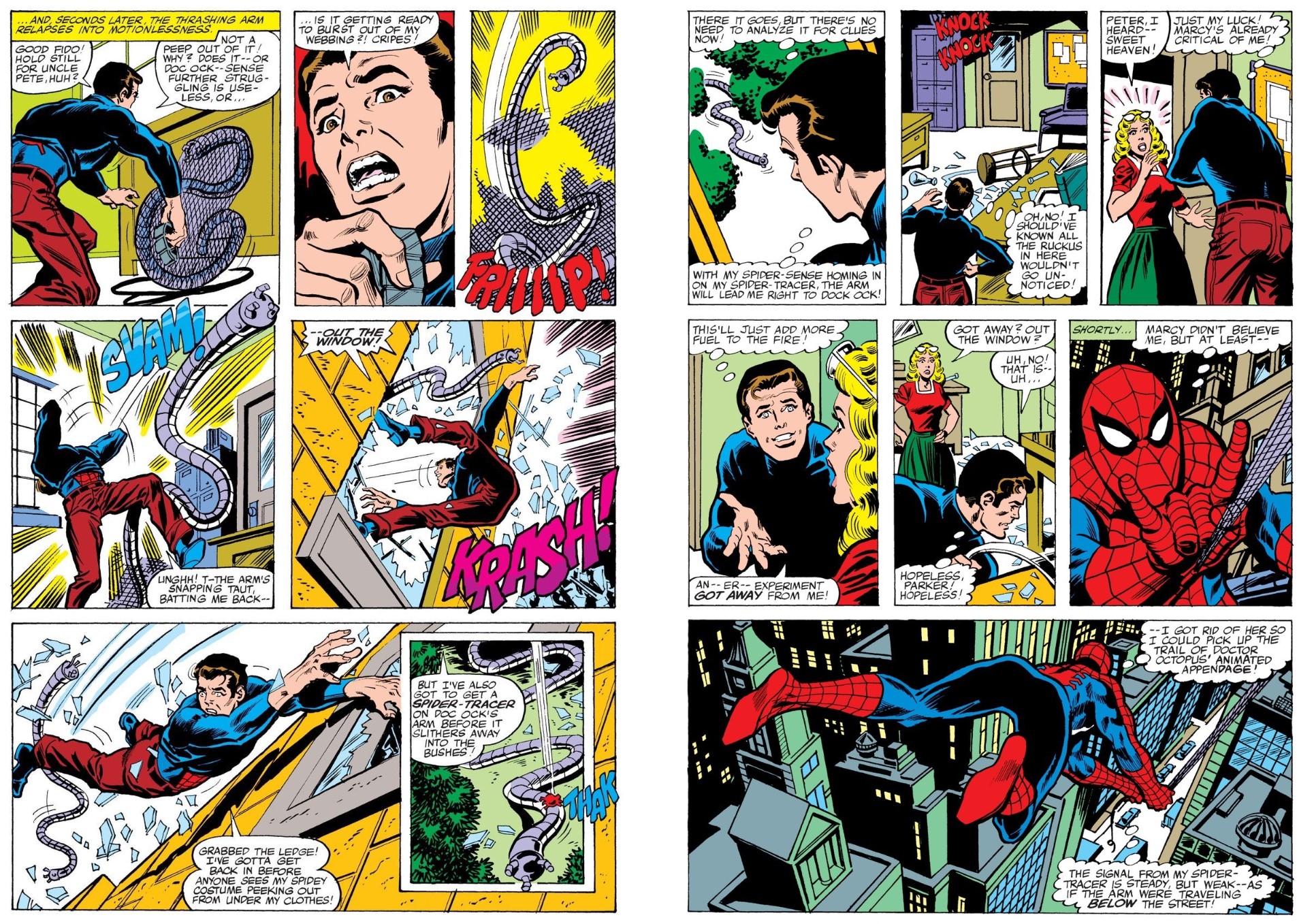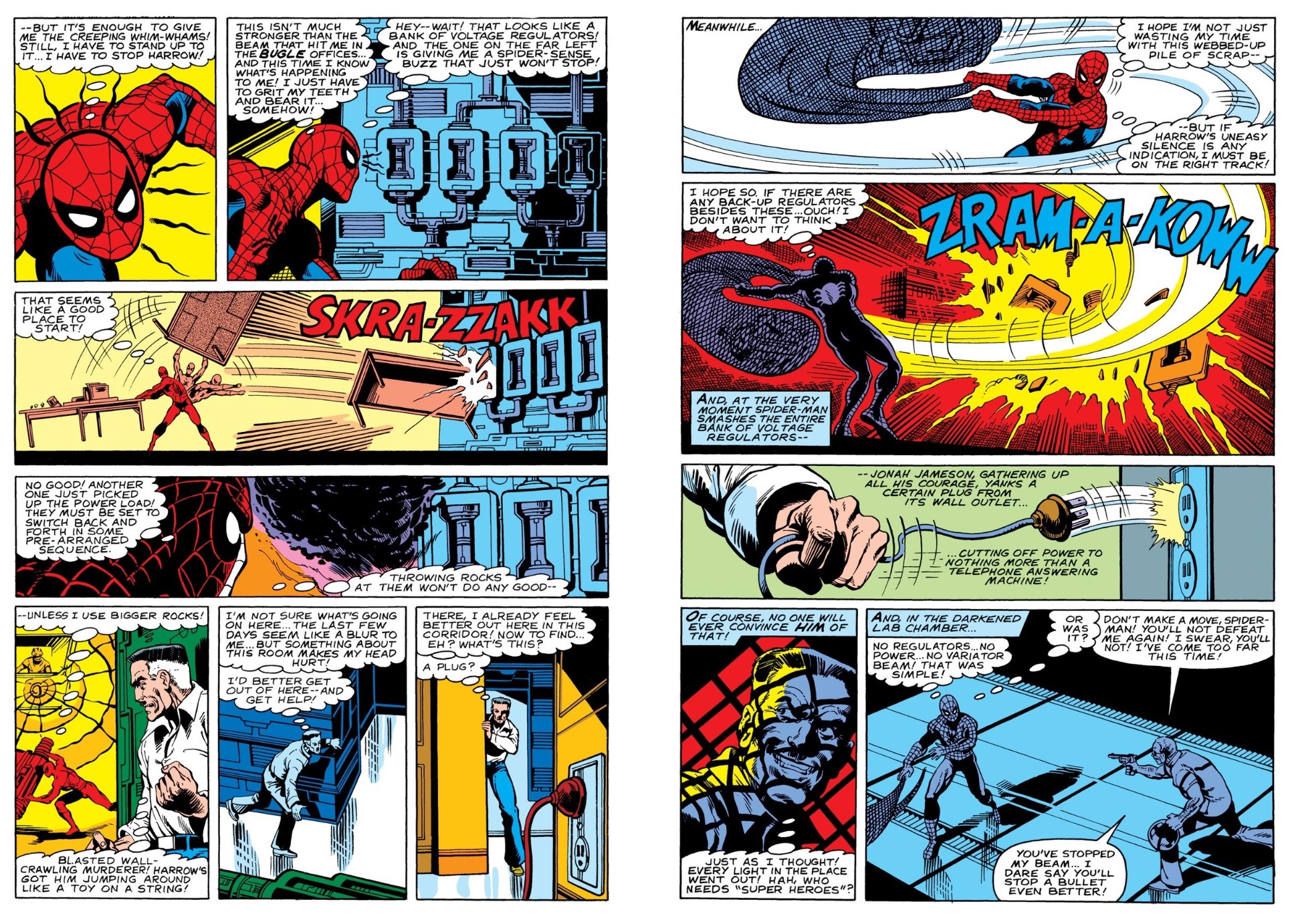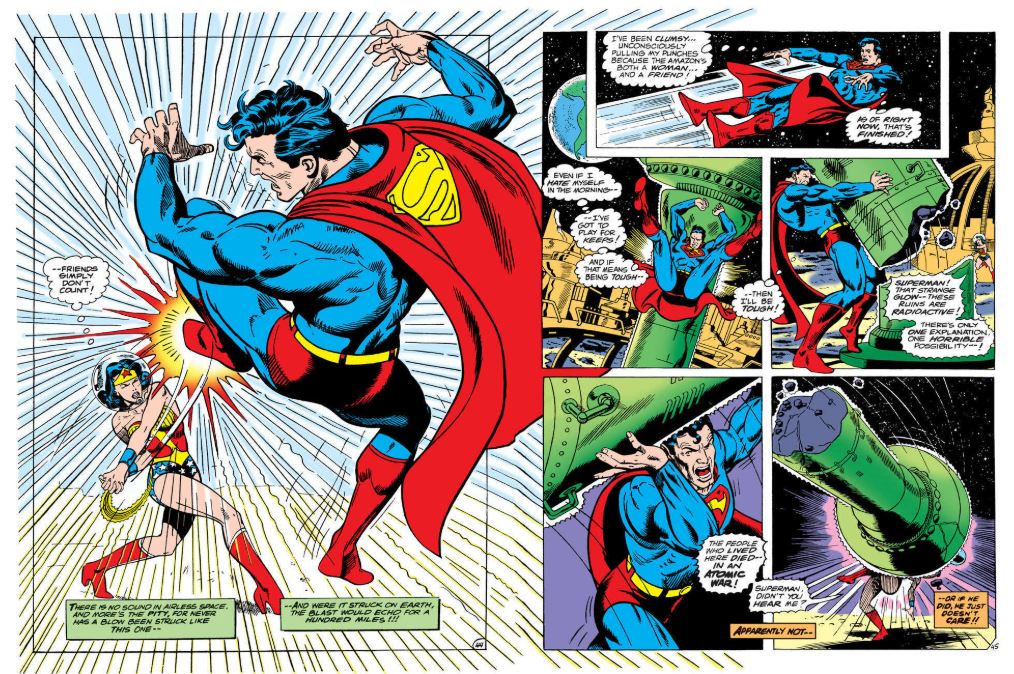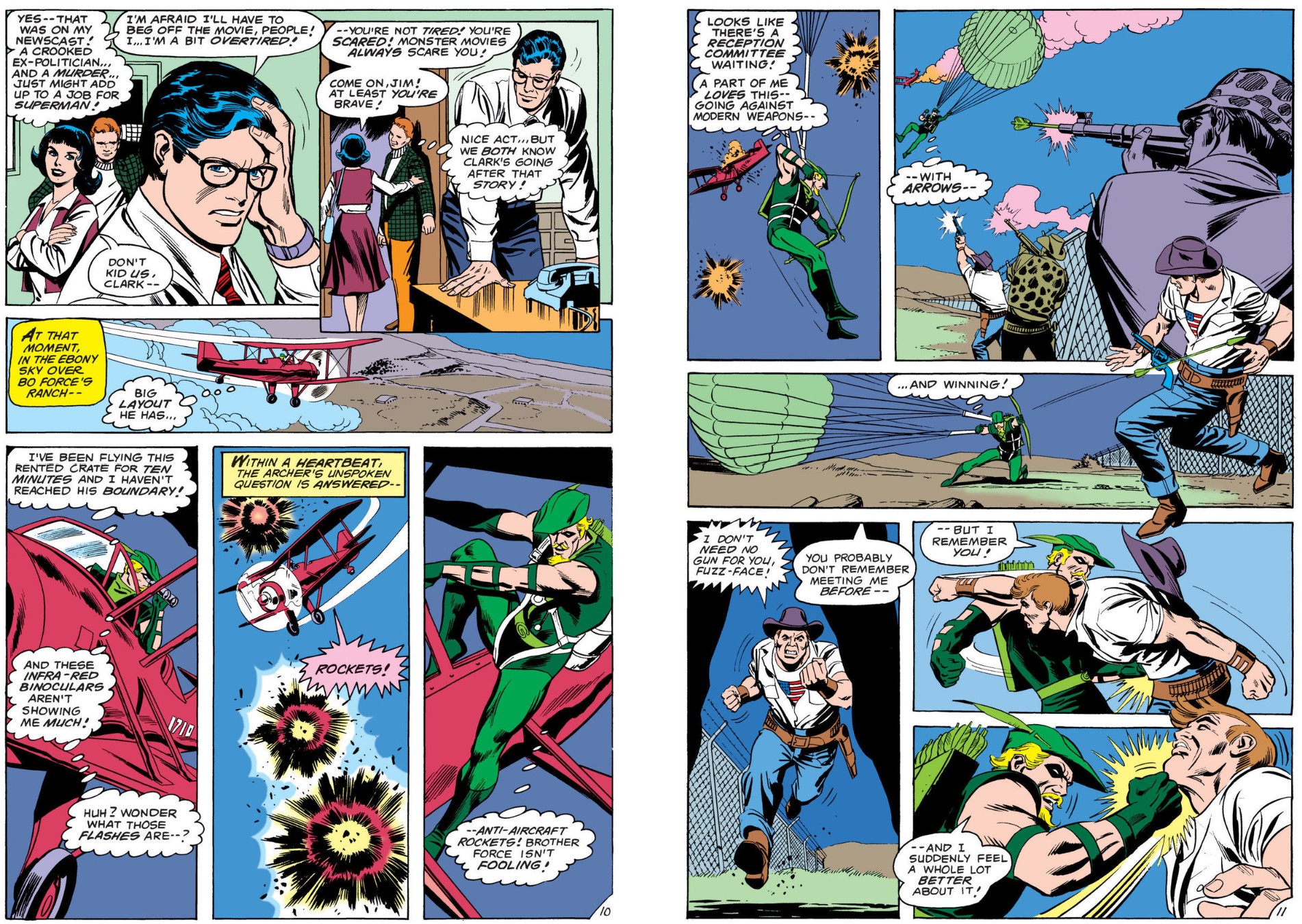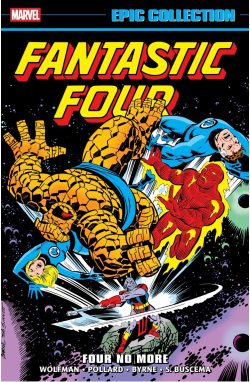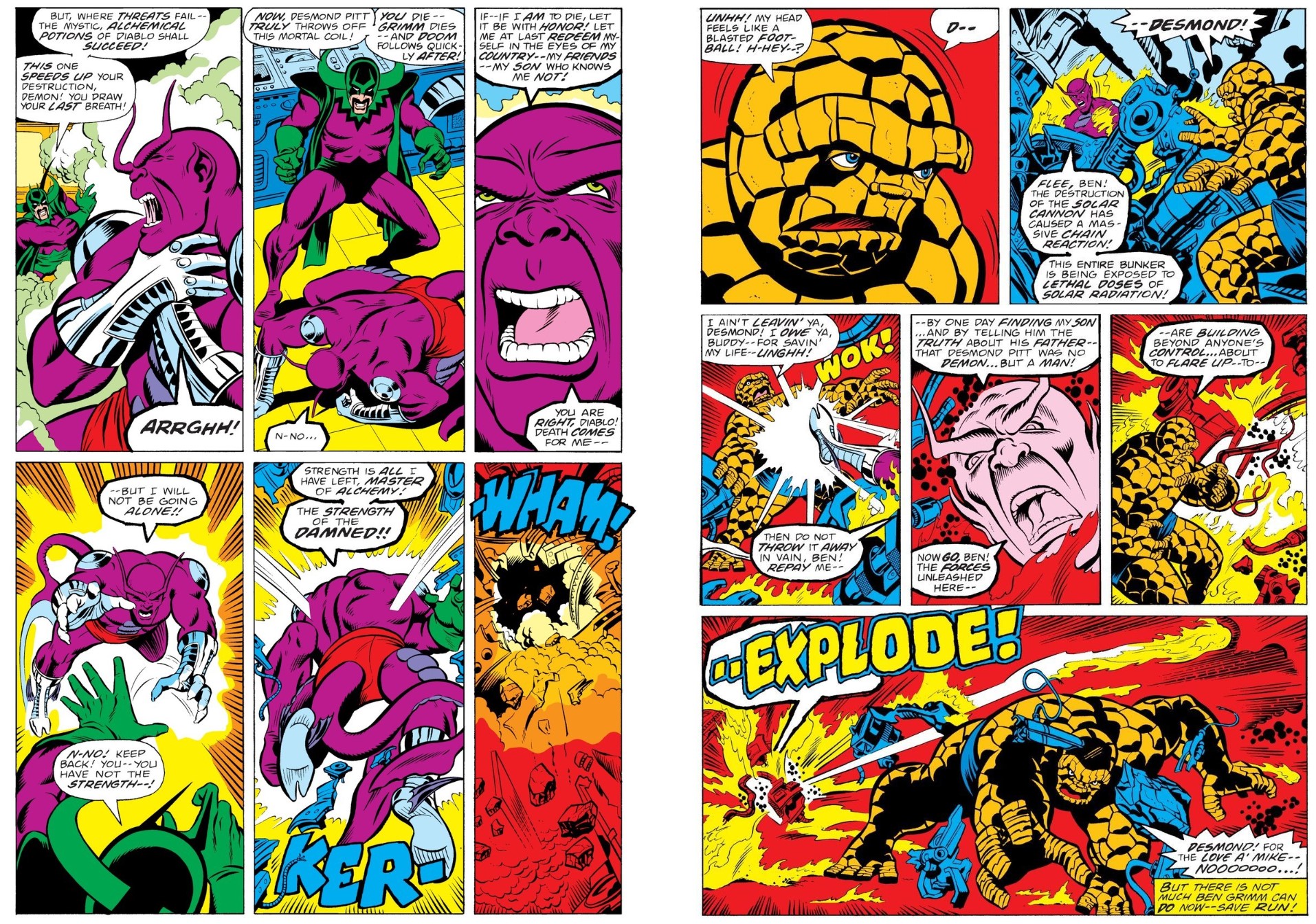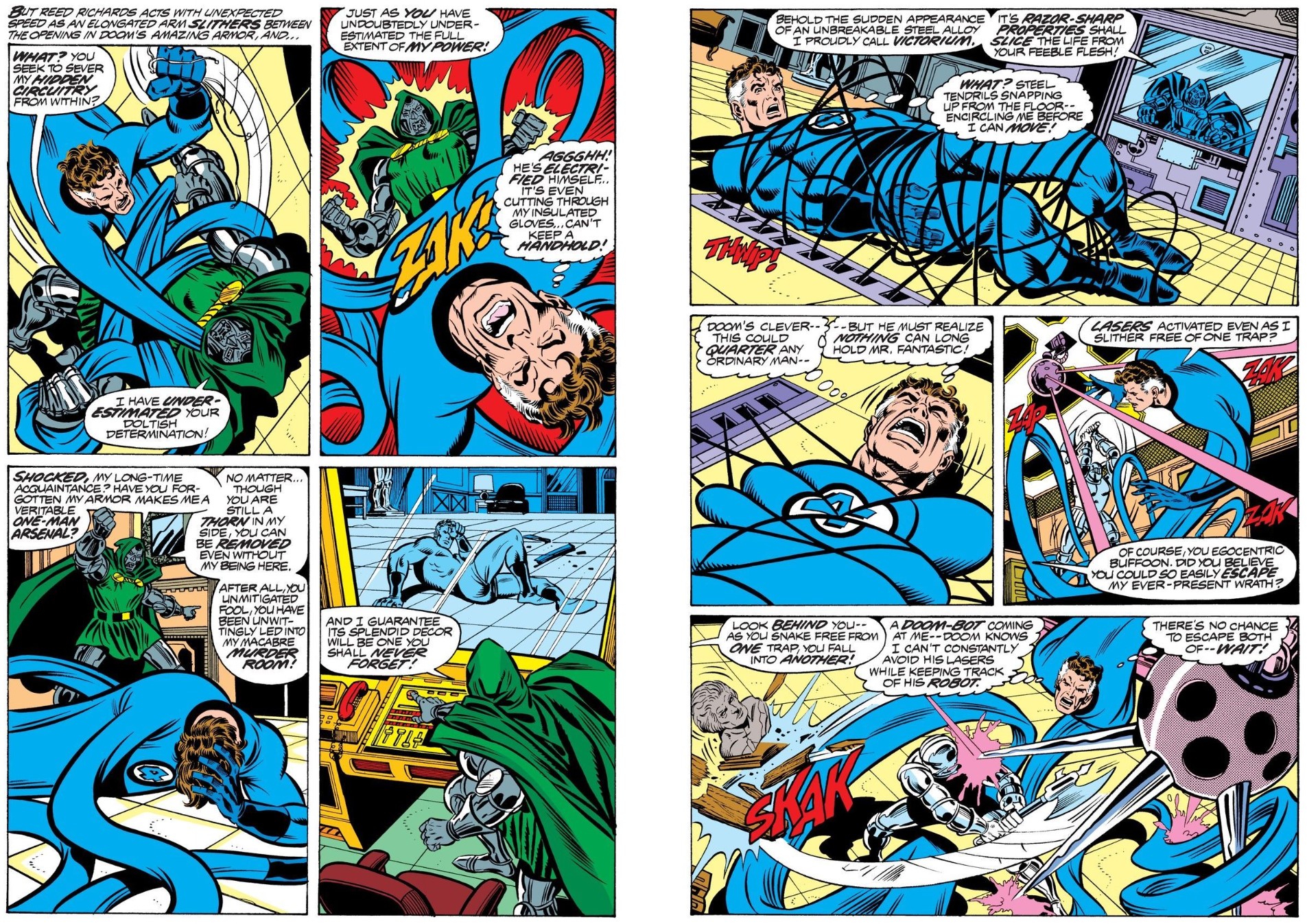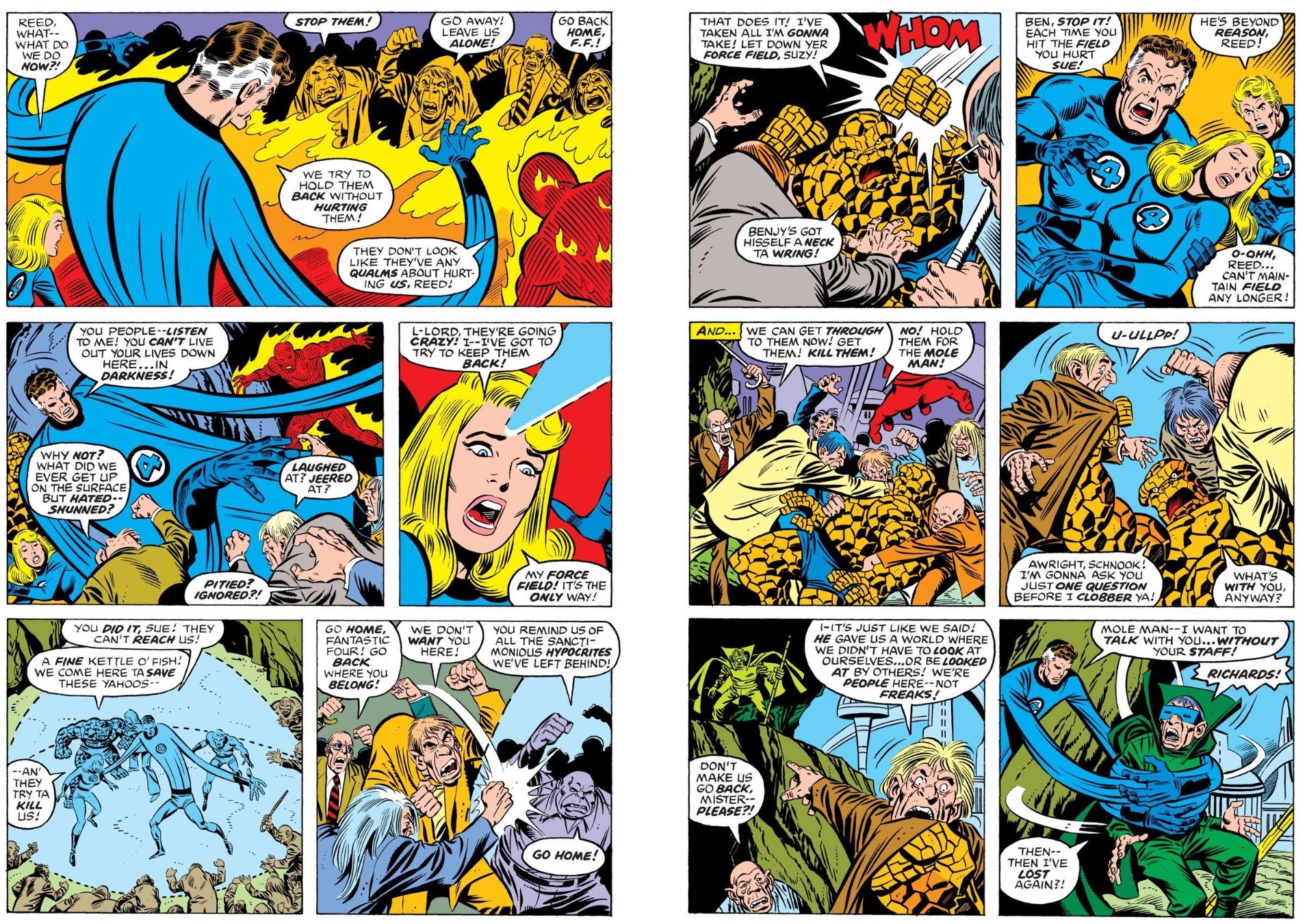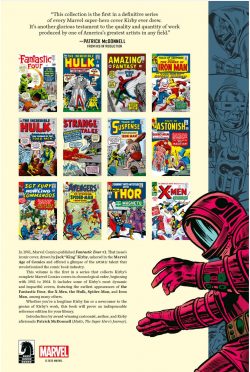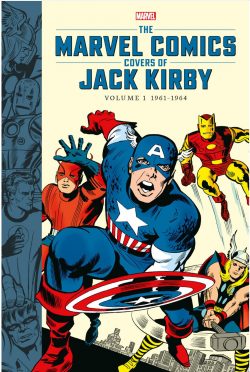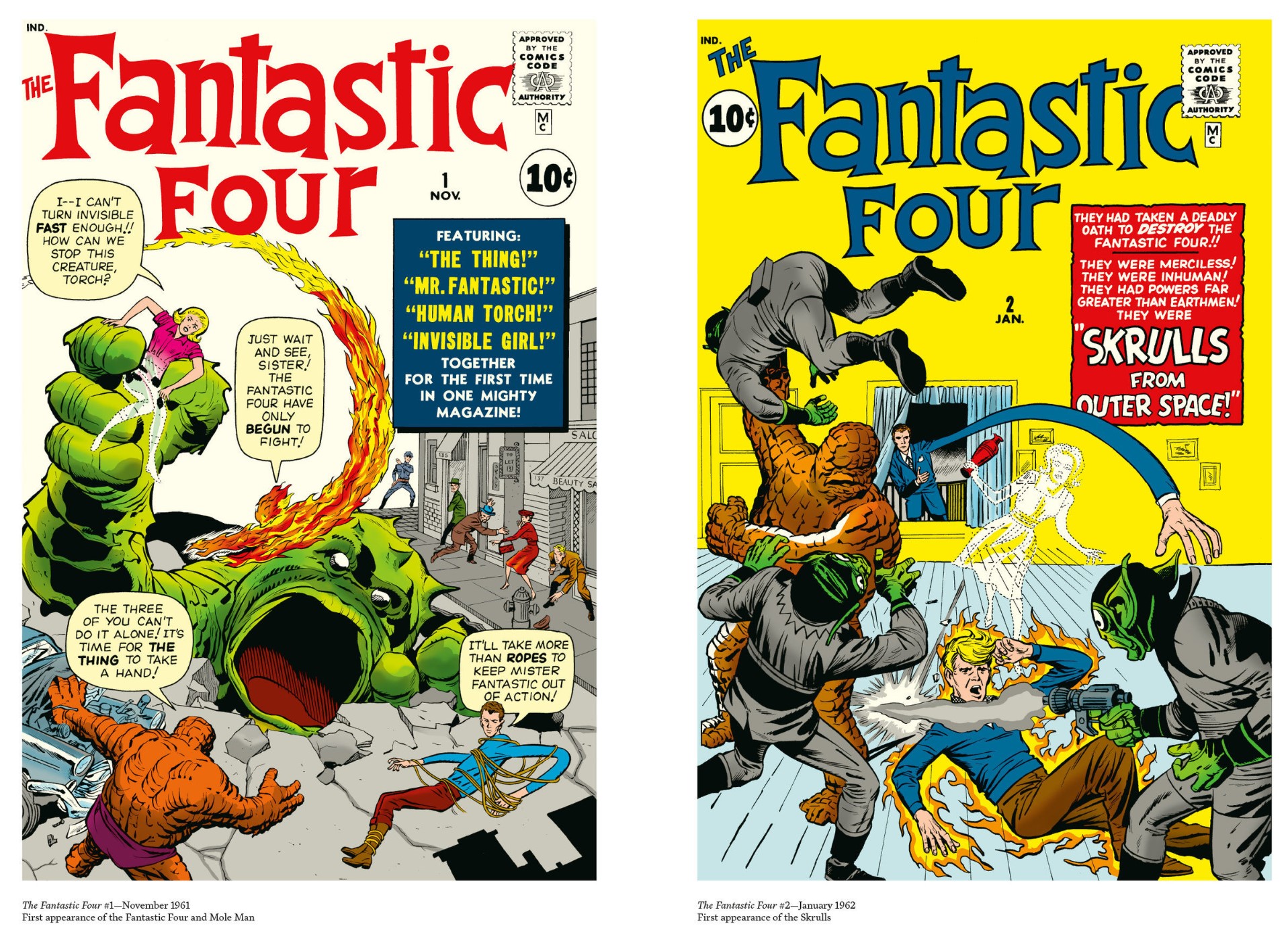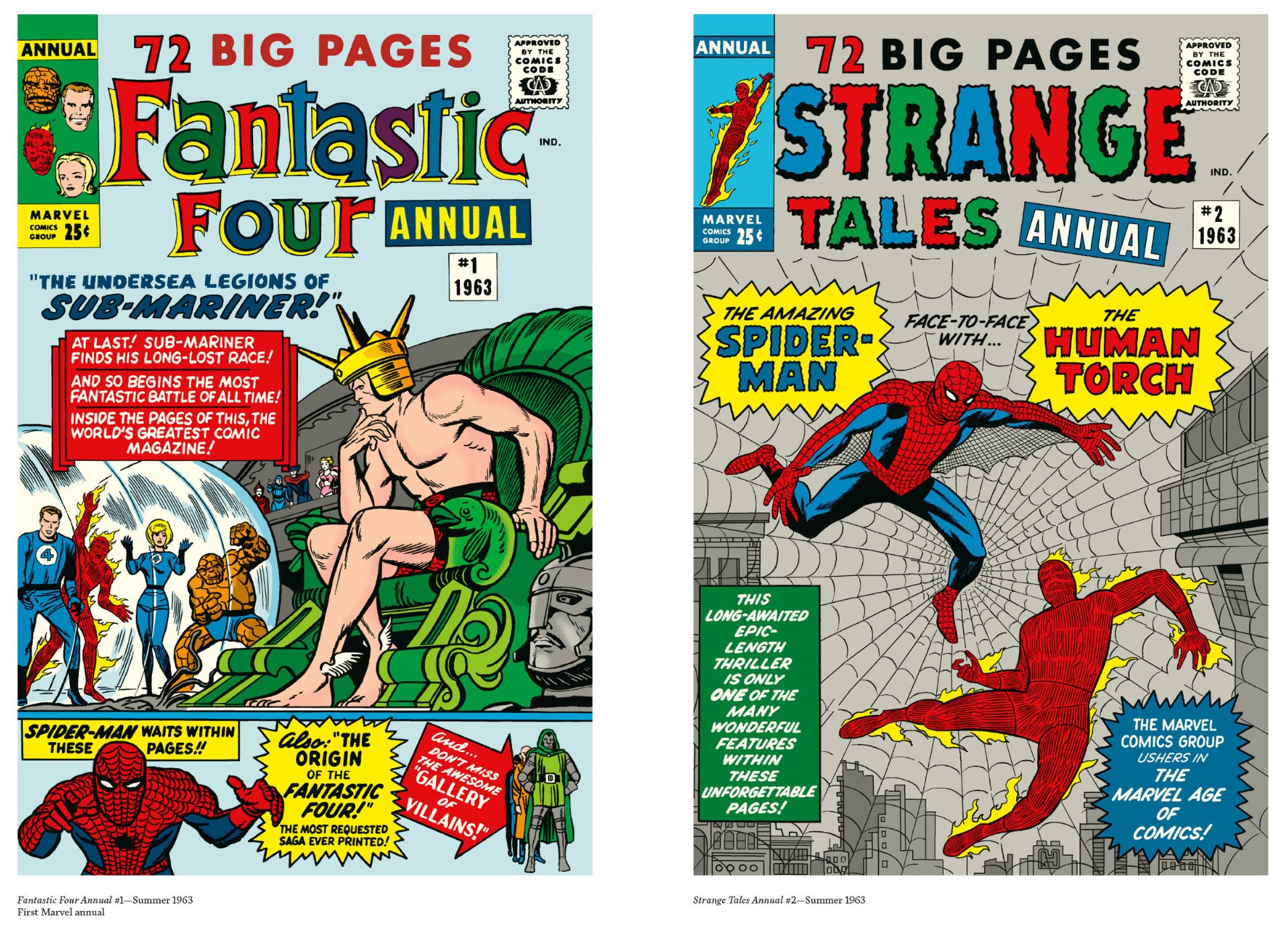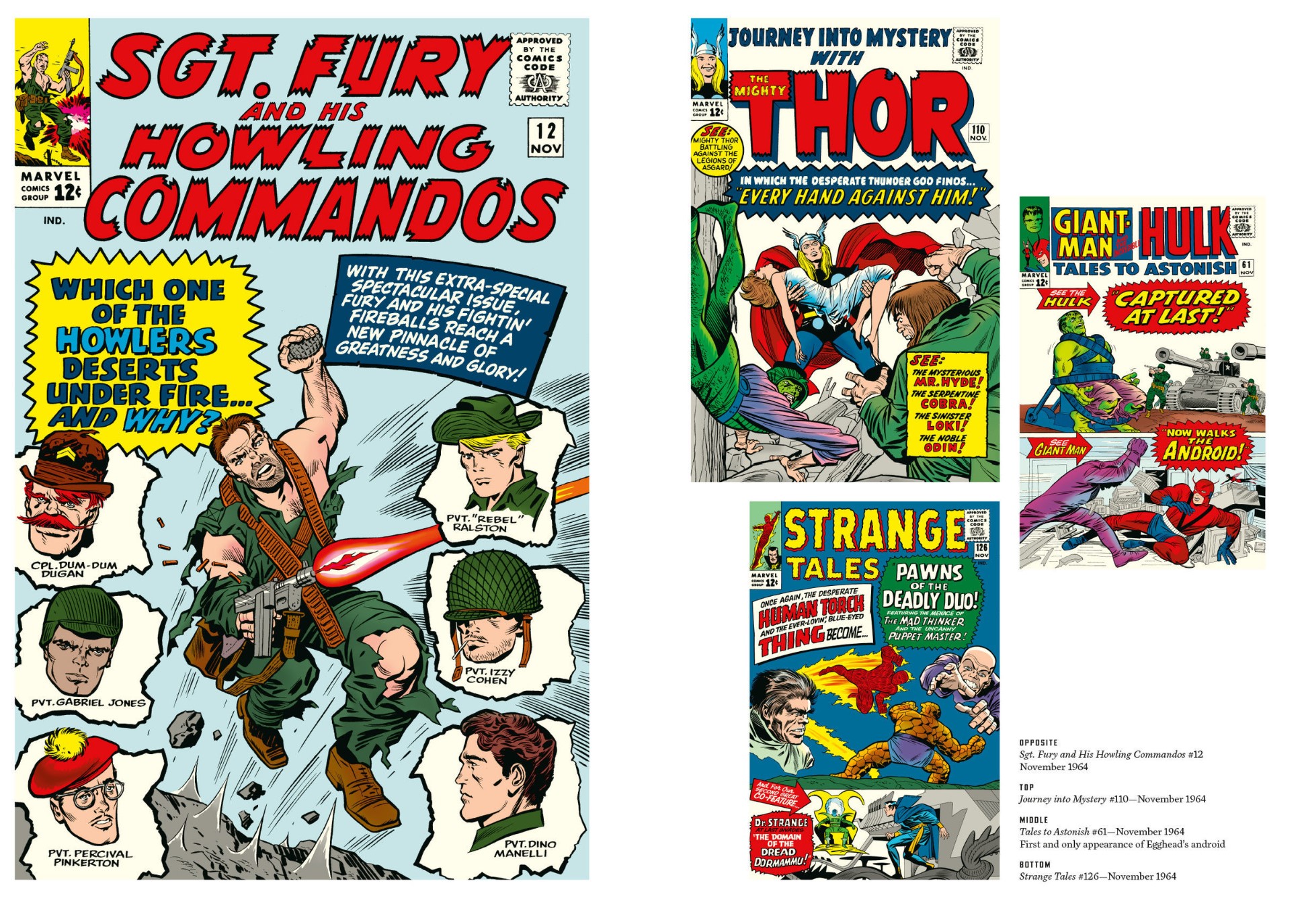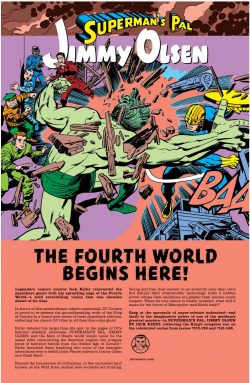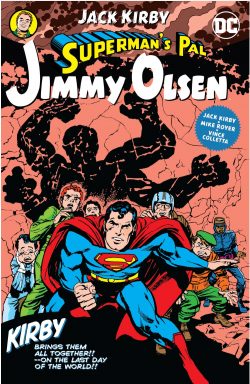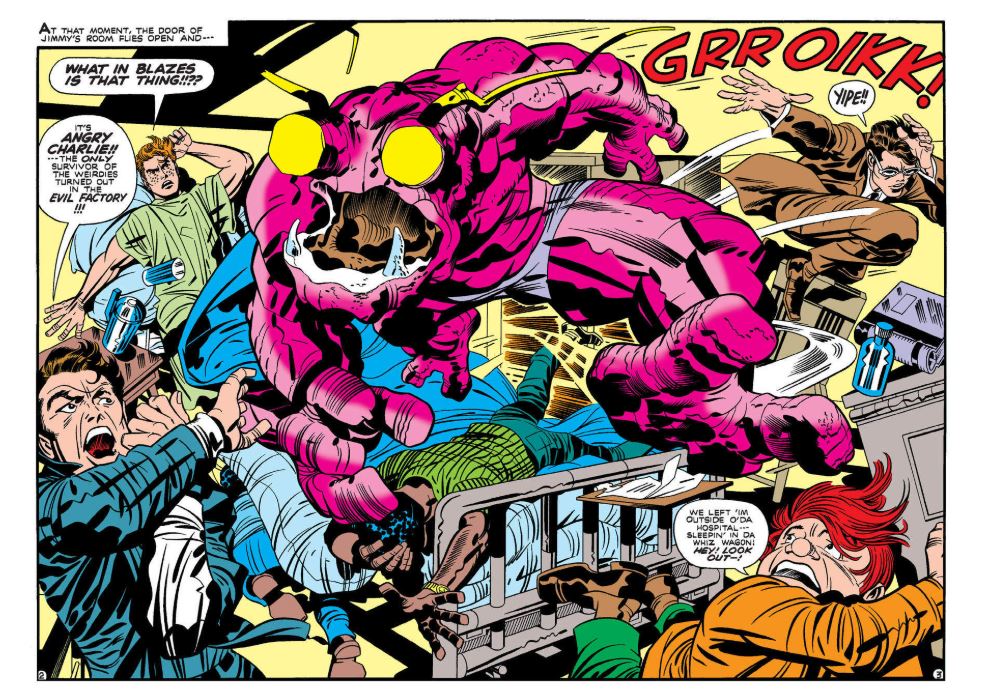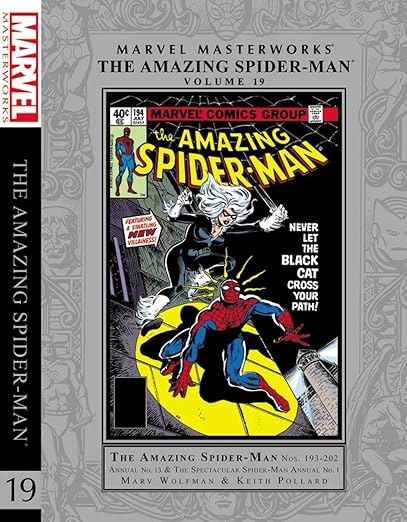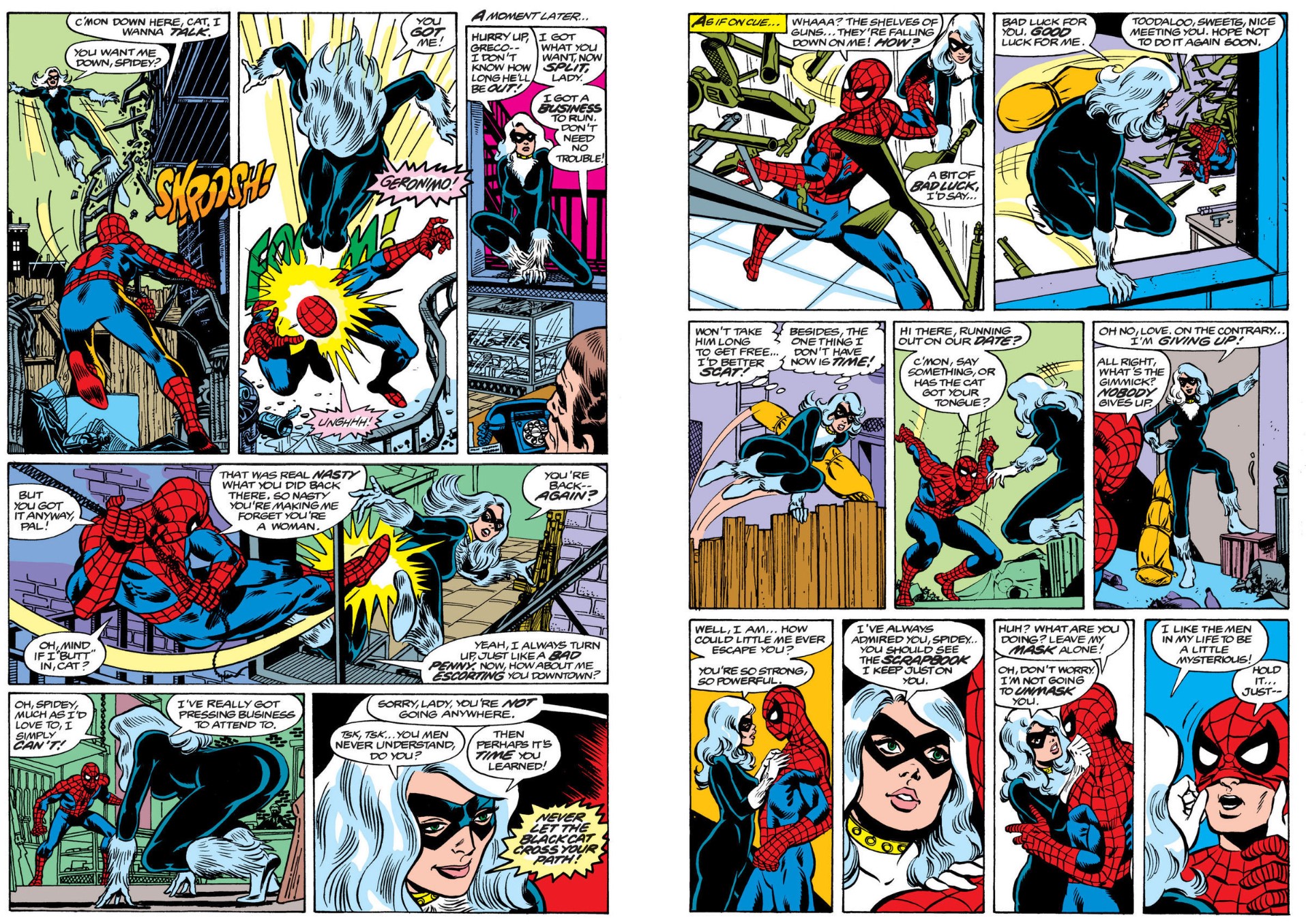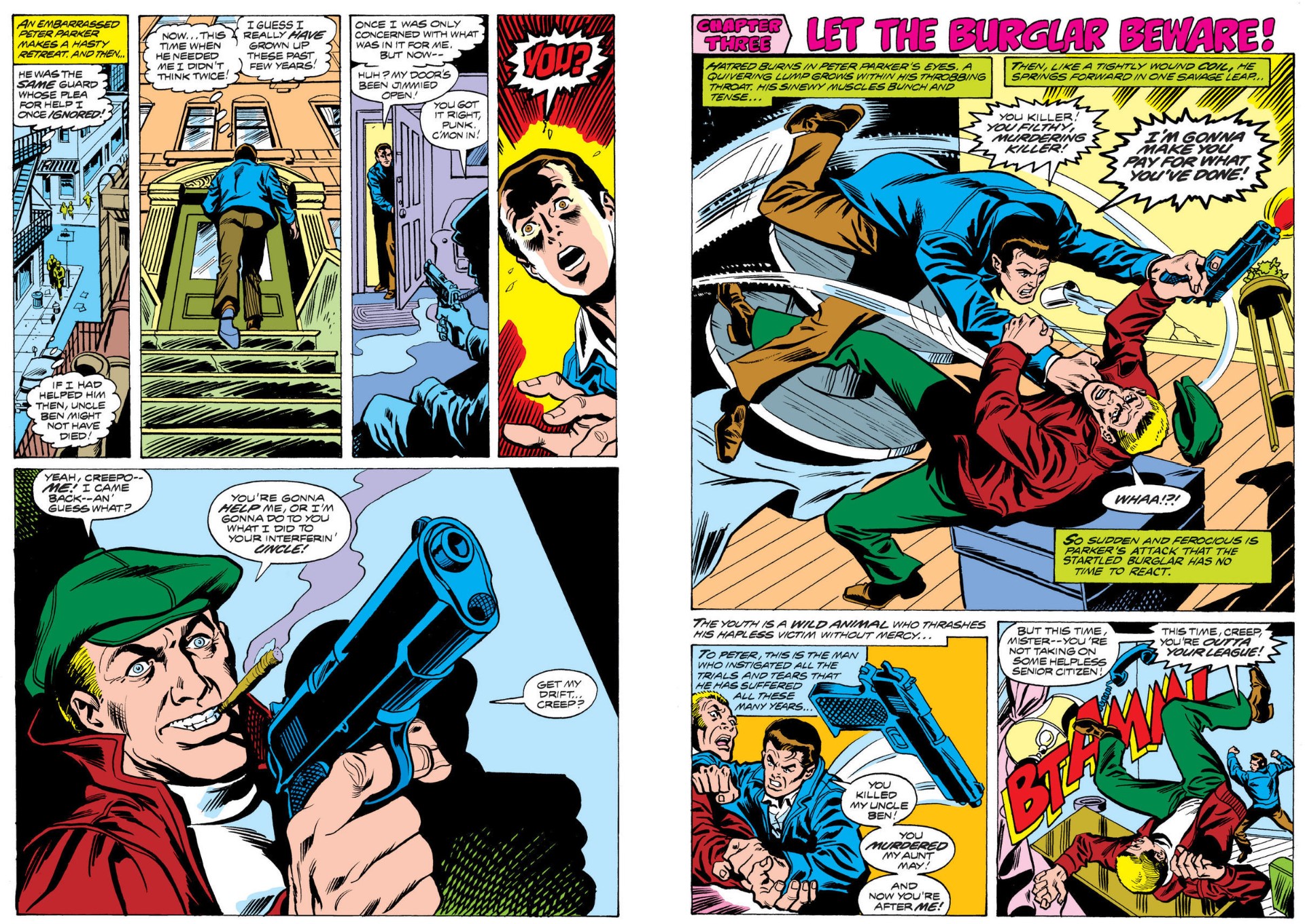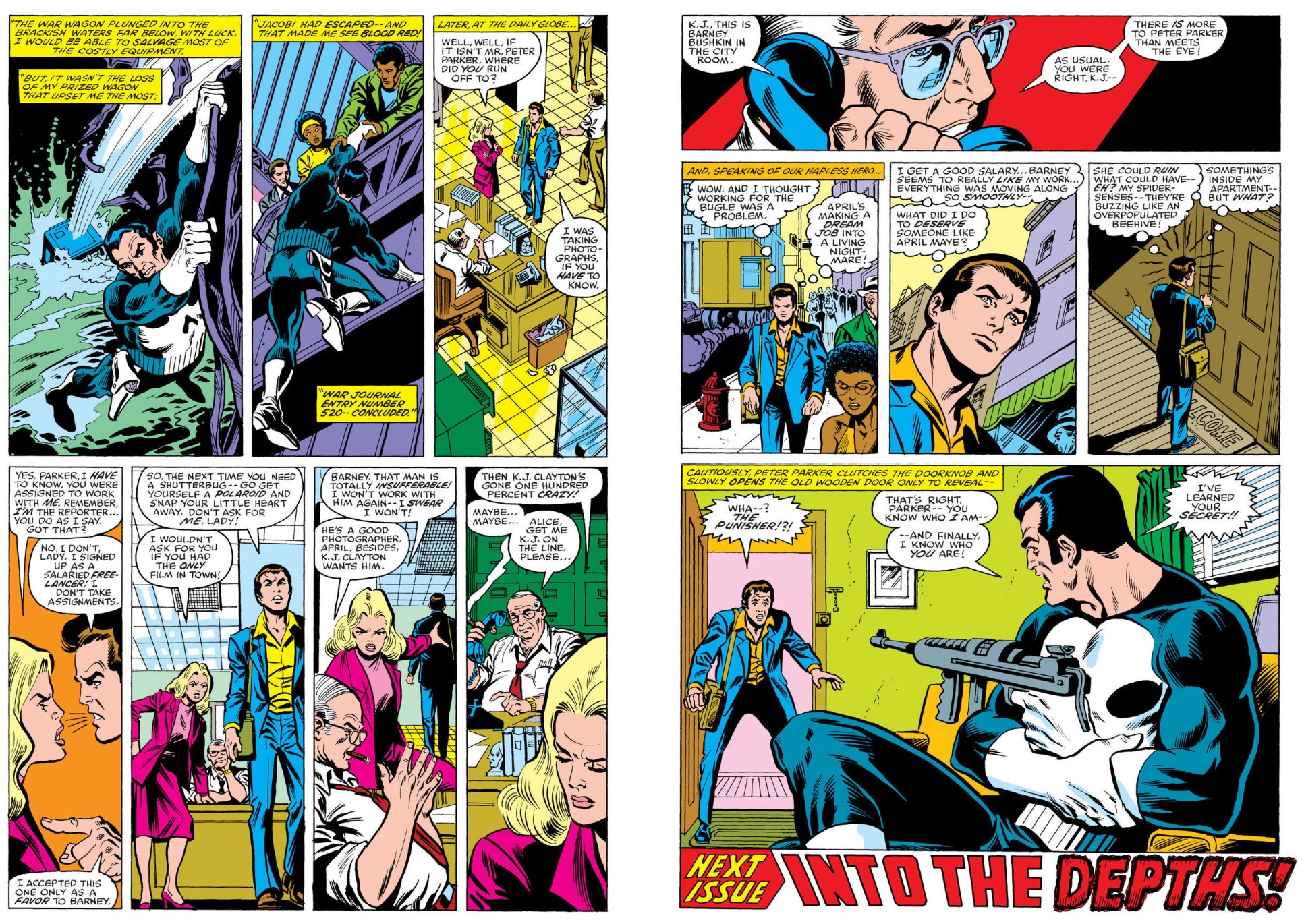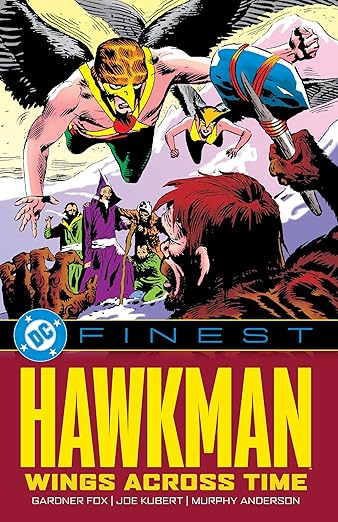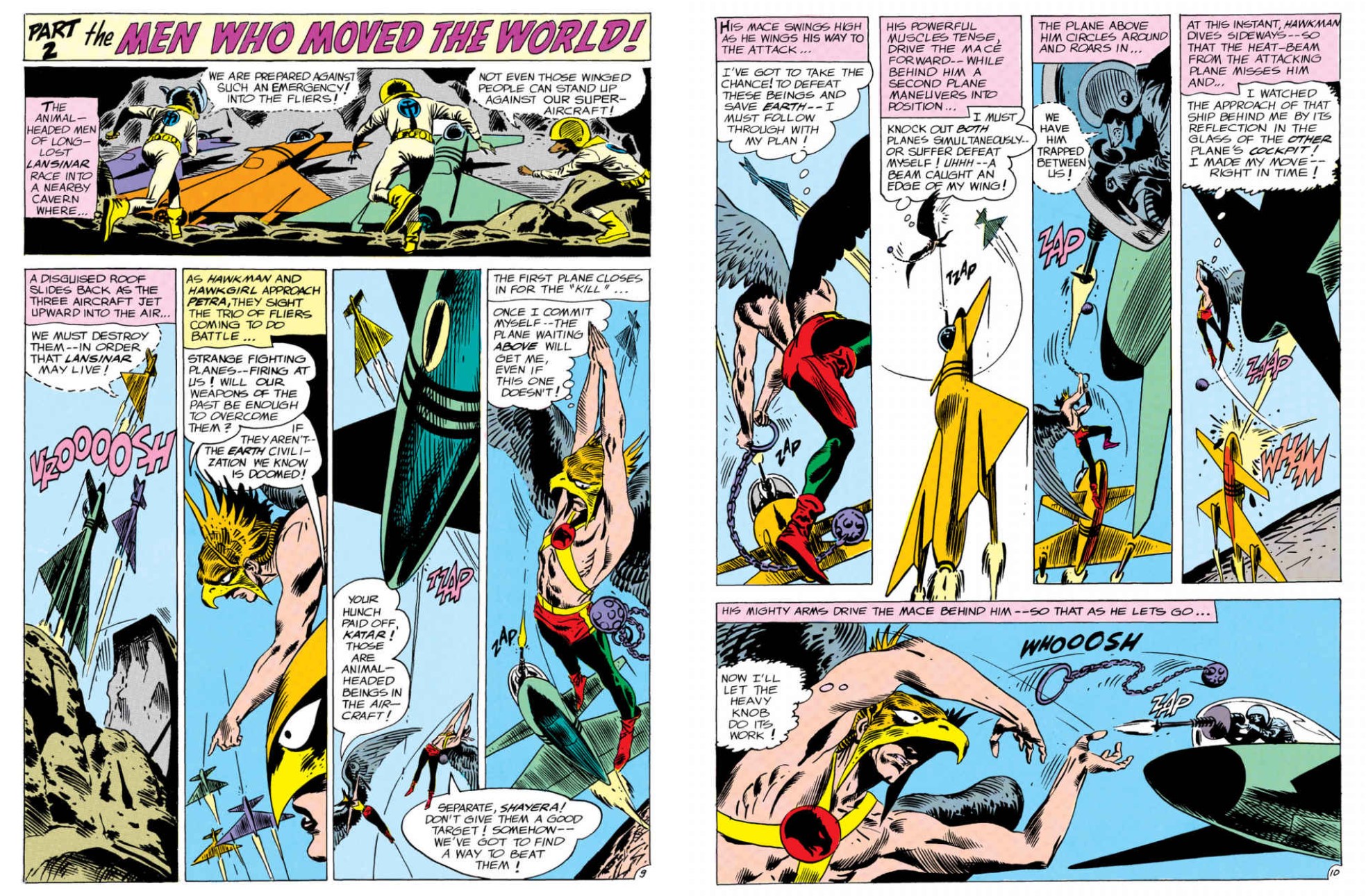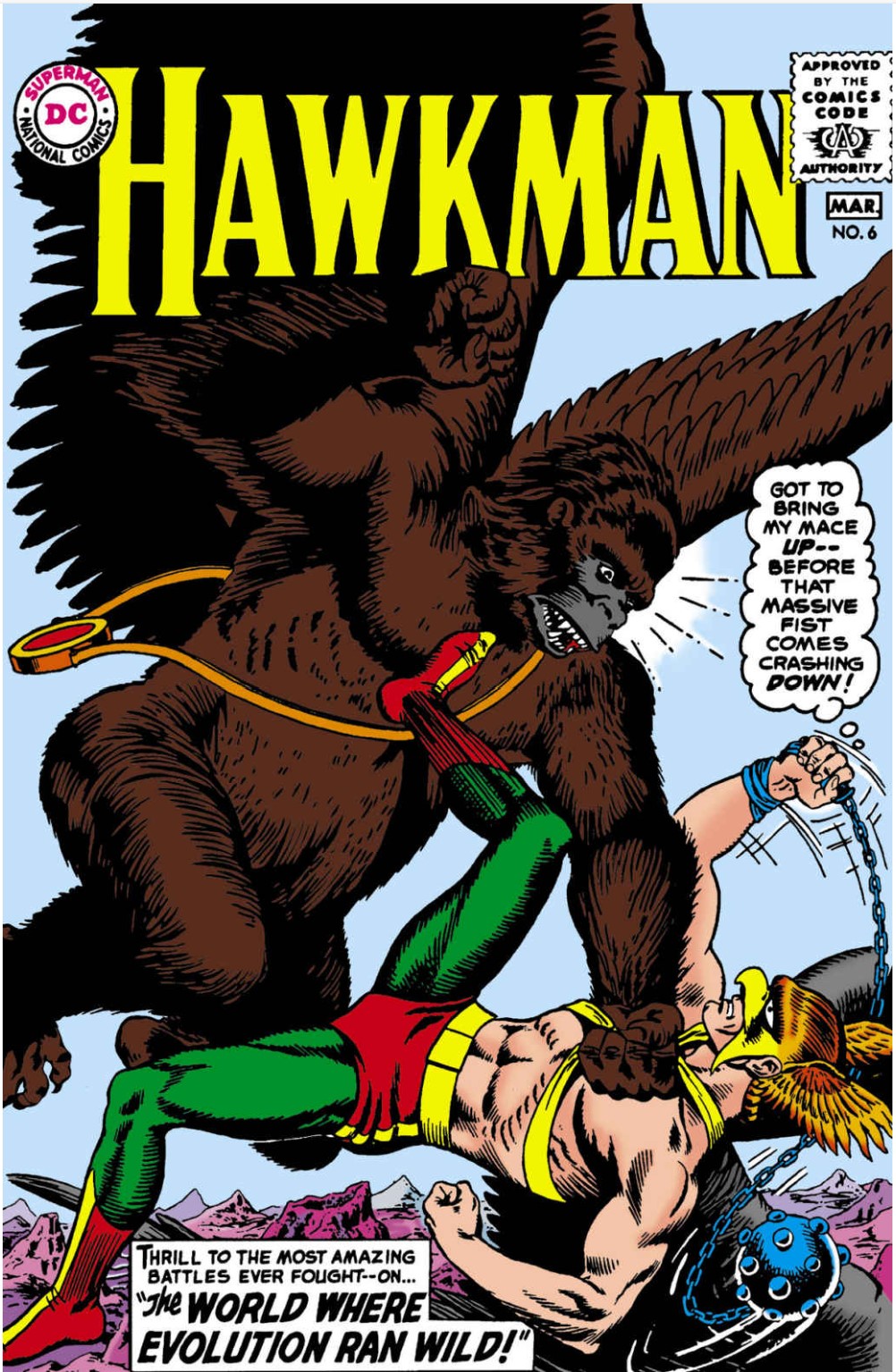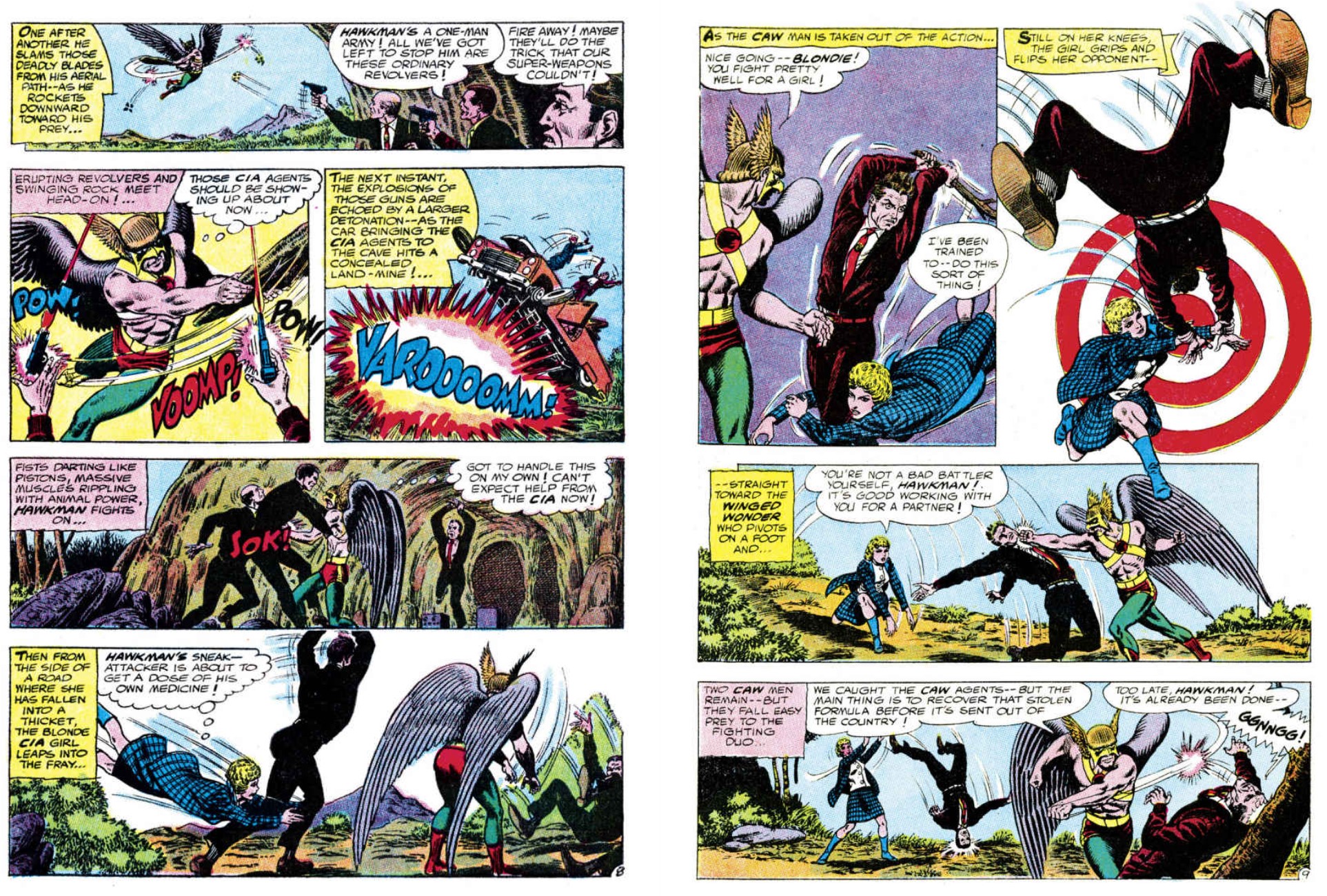


By Marv Wolfman & Gene Colan, Gerry Conway, Archie Goodwin, Gardner F. Fox, Roy Thomas, Vince Colletta, Tom Palmer, Ernie Chan, Jack Abel, Steve Gerber, Rich Buckler & Pablo Marcos, Neal Adams & various (MARVEL)
ISBN: 978-1-3029-2947-3 (HB/Digital edition)
This book includes Discriminatory Content produced in less enlightened times.
Today in 1926 Eugene Jules Colan was born. In a long and illustrious career, this is what most people remember him for, and rightly so as it was always his baby…
At the end of the 1960s American comic books were in turmoil, much like the youth of the nation they targeted. Superheroes had dominated the market and zeitgeist for most of the decade; peaking globally before explosively falling to ennui and overkill. Familiar, trusted genres like horror, westerns and science fiction were resurgent, and fed back into comics thanks to radical trends in moviemaking, where the kids who had grown up with Marvel now pursued the bulk of their young adult entertainment needs.
Inspiration isn’t everything. In fact, as Marvel slowly grew to a position of market dominance in the wake of the losing their two most innovative and inspirational creators, they did so less by experimentation and more by returning to and expanding proven concepts and properties. The only real exception to this was the en masse creation of horror titles: an initial response to that industry downturn in super-hero sales – and a move vastly aided and expedited by a rapid revision in the wordings of the increasingly ineffectual Comics Code Authority rules.
The switch to supernatural stars had many benefits. Crucially, it particularly brought a new readership to Marvel comics, one attuned to the global revival in spiritualism, Satanism and all things sinisterly spooky. Almost as important, it gave the reprint-crazy company opportunity to finally recycle old 1950s horror stories that had been rendered unprintable and useless since the code’s inception in 1954.
A scant 15 years later Comics Code prohibitions against horror were hastily rewritten – amazing how plunging sales can affect ethics – and scary comics came back in a big way. A fresh crop of supernatural heroes and monsters popped up on newsstands to supplement the ghosts, ghoulies and goblins already infiltrating the once science-only scenarios of the surviving mystery men titles. Crucially, lifting the Code ban resulted in so many horror titles (both new characters and reprints from the massive, multi company horror-boom of 1949-1955) that it undoubtedly caused a few more venerable costumed crusaders to (temporarily, at least) bite the dust.
Almost overnight nasty monsters (and narcotics, but that’s another story) became acceptable fare on four-colour pages and – whilst a parade of pre-code reprints made sound business sense – the creative aspect of the contemporary buzz for bizarre themes was catered to by adapting or incorporating established and still-popular cultural icons before risking whole new concepts on an untested public. As always in entertainment, the watchword was fashion: what was hitting big outside comics must be incorporated into the mix as soon as possible. When science-backed proto-horror Morbius debuted in Amazing Spider-Man #101 (cover-dated October 1971) and the sky failed to fall in, Marvel moved ahead with a line of shocking superstars.
They began with a traditional werewolf and then an already infamous vampire before chancing something new with a haunted biker who tapped into both Easy Rider’s freewheeling motorcycling chic and the prevailing supernatural zeitgeist. Recycling an old western’s title, an all-new Ghost Rider debuted in Marvel Spotlight #5, August 1972. He had been preceded by western hero Red Wolf in #1 and the aforementioned Werewolf by Night in #2-4. From these beginnings, spooky floodgates opened to such an extent there was even room for non-white stars such The Living Mummy, Brother Voodoo and zombie Simon Garth…
This momentously mean & moody compendium collects the neck-nuzzling dark lord’s earliest exploits from a time when he was regarded as an implacable outsider and murderous conquest-obsessed predator. They come from The Tomb of Dracula #1-11, April 1972 – August 1973, and are supported by material from mature-themed, monochrome magazine iteration Dracula Lives! #1-3 which – confusingly for the era – were constantly referenced in the colour comics even if us kids weren’t supposed to have them…
Thus they all lurk at the back of this grimoire of gore rather than unfold chronologically in-world.
Opening with a brace of revelatory, reminiscing Introductions from Roy Thomas and Marv Wolfman we learn the convoluted details and twisty path that led to disinterring the Count for his landmark debut in The Tomb of Dracula #1 cover dated April 1972 but actually on sale from November 16th 1971. By all accounts the simple use of a public domain character was an idea with many owners. Publisher Martin Goodman apparently pushed editor Stan Lee and never originally considered the project as a Marvel colour comic book. Nor was Gene Colan in the frame to draw it. The illustrator thought otherwise and aggressively and successfully campaigned for the job…
Eugene Jules Colan – sometimes AKA Adam Austin – was born in the Bronx and drew comics for almost his entire life. They included countless genre shorts in every conceivable field, plus character s like Daredevil, Batman, Superman, Wonder Woman, Howard the Duck, Iron Man, Sub-Mariner, Captain America, The Spectre, Hulk, Avengers, Kid Colt. Outlaw, Brother Voodoo, Star-Lord, Wolverine and more. His co-creations include first African-American superhero The Falcon, Guardians of the Galaxy, two Captain Marvels (Mar-Vell & Carol Danvers), Blade the Vampire Hunter, Dracula’s daughter Lilith, Night Force, Nathaniel Dusk, Silverblade, Detective Inc., Jemm, Son of Saturn, Jughead’s Time Police, Ragamuffins, and much work for Archie, Bongo, Comico, CrossGen, Disney, Fiction House, IDW & and Ziff-Davis Comics.
He also worked on franchises such as Unknown Worlds of Science Fiction, Jaws, Meteor, Elvira’s House of Mystery, Little Shop Of Horrors, DC Science Fiction Graphic Novel (#2, 1986 – Robert Silverberg’s Nightwings co-adapted with Cary Bates), Predator, Clive Barker’s The Harrowers: Raiders of the Abyss, Teenage Mutant Ninja Turtles Adventures, Buffy the Vampire Slayer and To Riverdale and Back Again.
Very much the Native New Yorker, Colan was schooled at George Washington High School, Washington Heights before attending the Art Students League of New York and being caught trying to enlist underage in the US Marines. Gene began drawing for pay in 1944 (for Wings Comics). Legitimate military service came quickly enough and he joined the Army Air Corps, but served on the ground in the Philippines until 1946. Thereafter, as a demobbed corporal he quickly found work drawing and lettering for Timely Comics: primarily crime, horror and war shorts… and the last few issues of Captain America Comics.
When the company imploded in 1948, Colan began freelancing for National/DC and Timely’s successor Atlas comics until their subsequent demise. His meticulous, authentic humanist style made him the go-to guy for the surging war comics genre at both companies and led to his first regular gig, illustrating DC licensed property Hopalong Cassidy from 1954-1957. From there he moved into National’s lucrative romance division, contributing regularly to all seven of their titles. Like fellow comics master John Romita and so many others, Colan was lured to Stan Lee’s latest enterprise when the Marvel Phenomenon properly took hold, and became a mainstay on the Man without Fear and literally dozens of other titles. Hedging his bets, at the time of his move he also began working on mature monochrome magazine horror tales for Archie Goodwin at Warren publications, contributing to Eerie and Creepy.
His unique artistic style of fluid motion and moody shadows meant he was always first choice when Marvel tried something off the beaten superhero track, such as Medusa, Doctor Doom and especially Doctor Strange, Howard the Duck (with comics “soulmate” Steve Gerber) and Dracula, but in 1981 increasing tensions between Colan and Editor-in-chief Jim Shooter led to the artist’s return to DC, experiments with the burgeoning Direct Sales marketplace and the most productive and expansive period of his comics career.
He periodically returned to Marvel with an award winning Captain America yarn, a fresh stint on Daredevil, further Tomb of Dracula tales with Marv Wolfman (as well as different Dracula series for Dark Horse) and an epic, revelatory anti-apartheid Black Panther saga penned by preferred collaborator Don McGregor Panthers Quest please link to Black Panther Marvel Masterworks volume 3, 9th August 2021.
In 2009 Captain America #601’s anniversary tale ‘Red, White and Blue-Blood’ (with scripter Ed Brubaker and inker Dave Gutierrez) won Colan an Eisner Award to add to his lifetime of prizes. Despite severe and escalating eyesight problems, Colan worked constantly and – as he had since the 1980s – still found time for gallery shows and teaching the next generation of pictorial storytellers at Manhattan’s School of Visual Arts and Fashion Institute of Technology. He died from complications of cancer and liver failure on June 23rd 2011.
For many afficionados, his work on Tomb of Dracula is probably his finest. Colan’s enthusiasm for the character and project were limitless and he survived a merry-go-round of early writers before the series found its feet. It also survived the crash of horror titles as the 1970s closed and carved a unique space for itself in Marvel continuity. It was revived many, many times, treating classic horror themes and tropes with deference, generating new stars and even wedging the Count into superhero crossovers that should not have worked but did. ToD deftly evolved from classic horror comics into a dark soap opera of character-based terror whilst seeking to get inside the mind of a protagonist who literally thought of humanity as food…

Extra-long, inked by Colan himself, and with the illustrator basing his star on the movie star Jack Palance, ‘Dracula’ stemmed from an idea by Lee, and was plotted by Roy Thomas with the final script coming via Gerry Conway & Colan. It introduces bankrupt wastrel Frank Drake, a bone fide descendent of the legendary literary icon. On learning he has inherited the family castle, Drake heads for Transylvania accompanied his new girlfriend Jeanie Ovington. Distressingly they also bring her last boyfriend Clifton Graves along. He’s convinced Frank to turn the foreboding fortress into a theme park and not-so-secretly seeks to reclaim Jeanie…
The villagers are divided between modernity and genuine fear of their “fictitious” Overlord who clearly hasn’t been dead very long…
Marooned in the village, the Americans take refuge in Castle Dracula where an attack by bats, ill-disguised jealousy and mounting tensions force bitter Clifton to explore. When he finds Count Dracula’s actual tomb, he inevitably pulls a stake out of the skeleton’s chest, and the fate of the world is sealed…
Before travelling from London, Frank had “researched” the project by studying Bram Stoker’s novel, but is utterly unprepared for the very real Lord of Vampires who reconstitutes, disposes of Clifton and hungrily attacks Jeanie. The monster is only driven off by his human relative’s new-found knowledge and unanticipated courage. Still weak and ravenous the Count instead descends upon to the village for much-needed liquid sustenance. With another blood-drained corpse in the street and the thought of a renewed campaign of terror, the villagers rise and attack the castle, but not in time to save Jeannie from Dracula’s assault…
Vince Colletta inks second issue continuation ‘The Fear Within!’ as heartbroken Drake explores his fire-gutted inheritance with new companion Gort. When their search uncovers Clifton still alive, they return to London with the monster’s coffin, blithely unaware that the vampire has already begun reactivating his widespread network of slaves and servants. Within a fortnight Dracula stalks the metropolis again, and sets his hungry thrall Jeanie on Drake and Graves whilst he recovers his dissipated energies in slaughter and feeding. However, when he finally attacks the interfering mortals it is Jeanie who pays the price…
Suicidal after losing his fiancée twice, Drake is saved from plunging off Westminster Bridge in ToD #3 by unsuspected allies. Written by Archie Goodwin and inked by Tom Palmer, ‘Who Stalks the Vampire?’ introduces Rachel van Helsing and mute Indian/Sikh Taj Nital, as well as Scotland Yard’s Inspector George Chelm. The lifelong vampire fighters have followed Drake’s actions and now recruit the despondent descendent, but are unable to prevent the undead devil enslaving Clifton, who then helps Dracula recover his much-needed coffin.
The foray is foiled by both police and thieves and the vampire is driven off, leaving behind not only his desperately needed bier but also the millions in gold bullion secreted within it: operating capital that could have helped the undead disappear from official scrutiny. Now forced to ignominiously flee, Dracula arrives at the isolated mansion of mystical collector Ilsa Strangway…
A faded fashion model obsessed with regaining her beauty, Strangway has obtained Dracula’s journal and bargains with him to “turn” her in return for a mystical looking-glass that can open portals into time. However, his voyaging ‘Through a Mirror Darkly!’ (Goodwin, Colan & Palmer) only occurs after a cruel trick played on the decrepit ingenue, one she fully reciprocates before Frank, Rachel and Taj ambush the plotters and in the melee, Dracula slips into the mirror taking Taj with him…
Pulp stylist Gardner F. Fox signed on for two issues beginning with #5 as ‘Death to a Vampire-Slayer!’ found the Count consigned to a demon-dimension and protecting his human companion as his only viable food supply. Eventually another mirror takes them to 19th century Transylvania affording Dracula an opportunity to assassinate Rachel’s grandfather Abraham van Helsing decades before she was conceived…
His plans and veritable orgy of bloodletting are ruined however, when Rachel & Frank solve the mystery of the Strangway’s mirror and arrive in time to drive him off. Frustrated and furious Dracula returns to 1972 with his age-old vampire bride Lenore in tow…
Hotly pursued by Rachel, Frank and Taj, the chase returns them all to the heaths around the Strangway house where the vampire couple’s first kill is saved by ‘The Moorlands Monster!’ This misunderstood, shambling hulk is a family shame and secret covered up by the manorial Deering clan, who are currently hosting Inspector Chelm after he arrived to investigate more blood-loss killings…
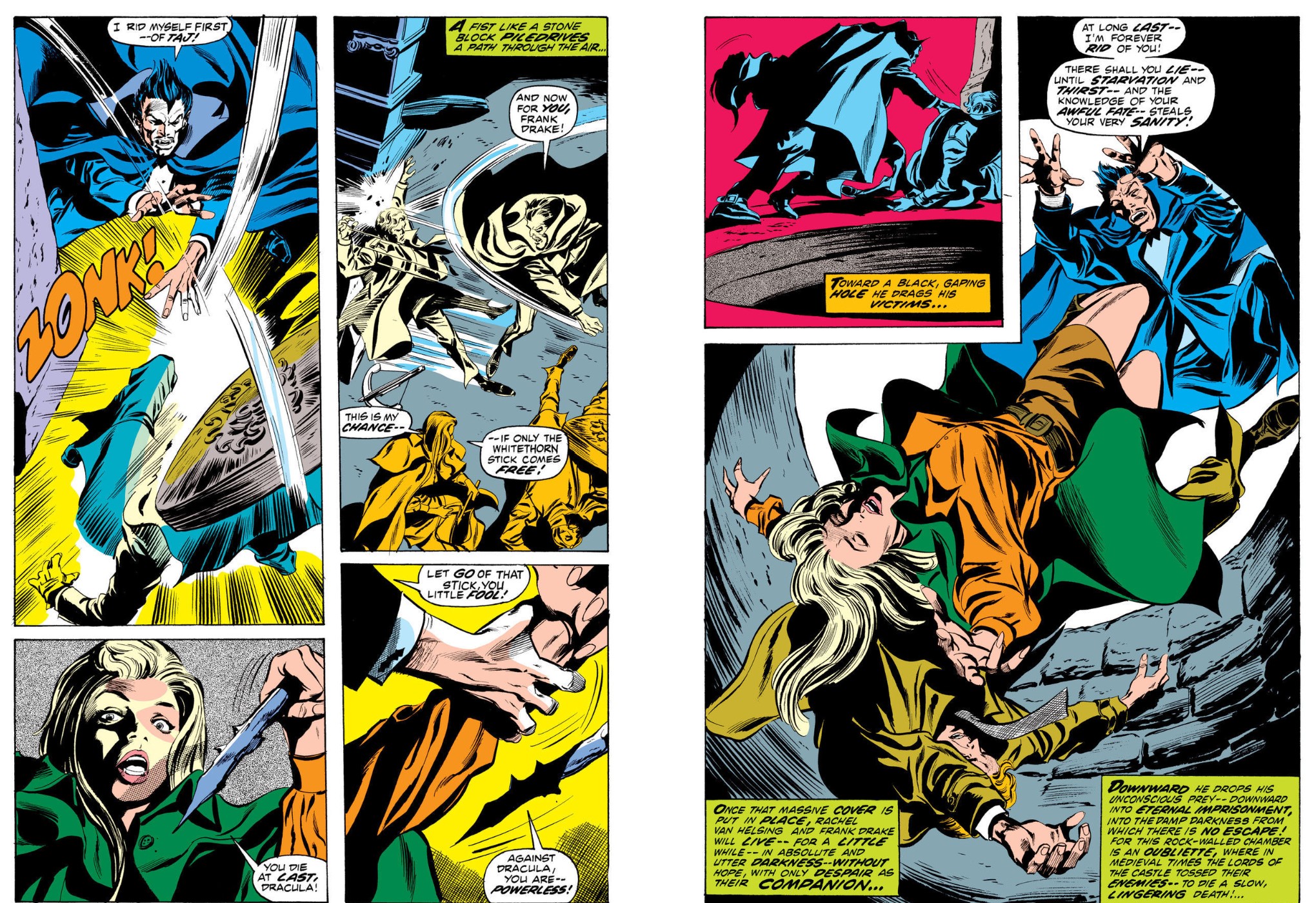
The tragic brute also plays a crucial part in saving the vampire fighters when the Count and Lenore ambush them. After turning the tables on the vampires, Dracula is forced to sacrifice his returned love just to save himself…
Following months of fast paced rapidly changing uncertainty, a degree of stability arrived as Marv Wolfman took over scripting with #7’s ‘Night of the Death-Stalkers!’ When Dracula returns to modern-day London, he attacks young Edith Harker but is driven off her wheelchair-bound father and his dog Saint. He is Rachel’s mentor Quincy Harker (son of one of the original 19th century vampire hunters cited in Stoker’s novel) and a man merging knowledge with high tech innovation. After he summons van Helsing, Taj Nital & Drake, Quincy shares his history of battling Dracula, even as the undead lord further abuses Clifton Graves. Done with his foes’ interference Dracula hypnotically recruits an army of children and rats to destroy them but the attack goes wrong and the Count is poisoned by a wooden dart…
With Ernie Chua/Chan inking, the tale steps into high gear as ‘The Hell-Crawlers’ sees the wounded fiend head for another of his sleeper agents even as the vampire-fighters are surrounded by homicidal knife-wielding children. Although the adults initially escape, the kids’ programming is unshakable and pursuit relentless. However, Dracula’s long absence has weakened his control of clandestine bloodsucker Dr Heinrich Mortte – who has faithfully safeguarded a devilish device to raise the dead as vampires – and his servant rebels, battling his master for the doomsday ray.
Although triumphant, Dracula is severely wounded by the clash and loses control of his child death squad. He also falls into the ocean, and – with Colletta inking – resurfaces in quiet fishing village Littlepool which is soon blighted by ‘Death From the Sea!’ after local priest Father William exploits “Mr. Drake”’s miraculous survival to drive a local religious revival. However, as locals – such as biker/future vampiric archfoe Lucas Brand, goodtime girl Gladys and petty thug Corker continue to die, the remaining villagers are forced into the same kind of response that drove Dracula from Transylvania…
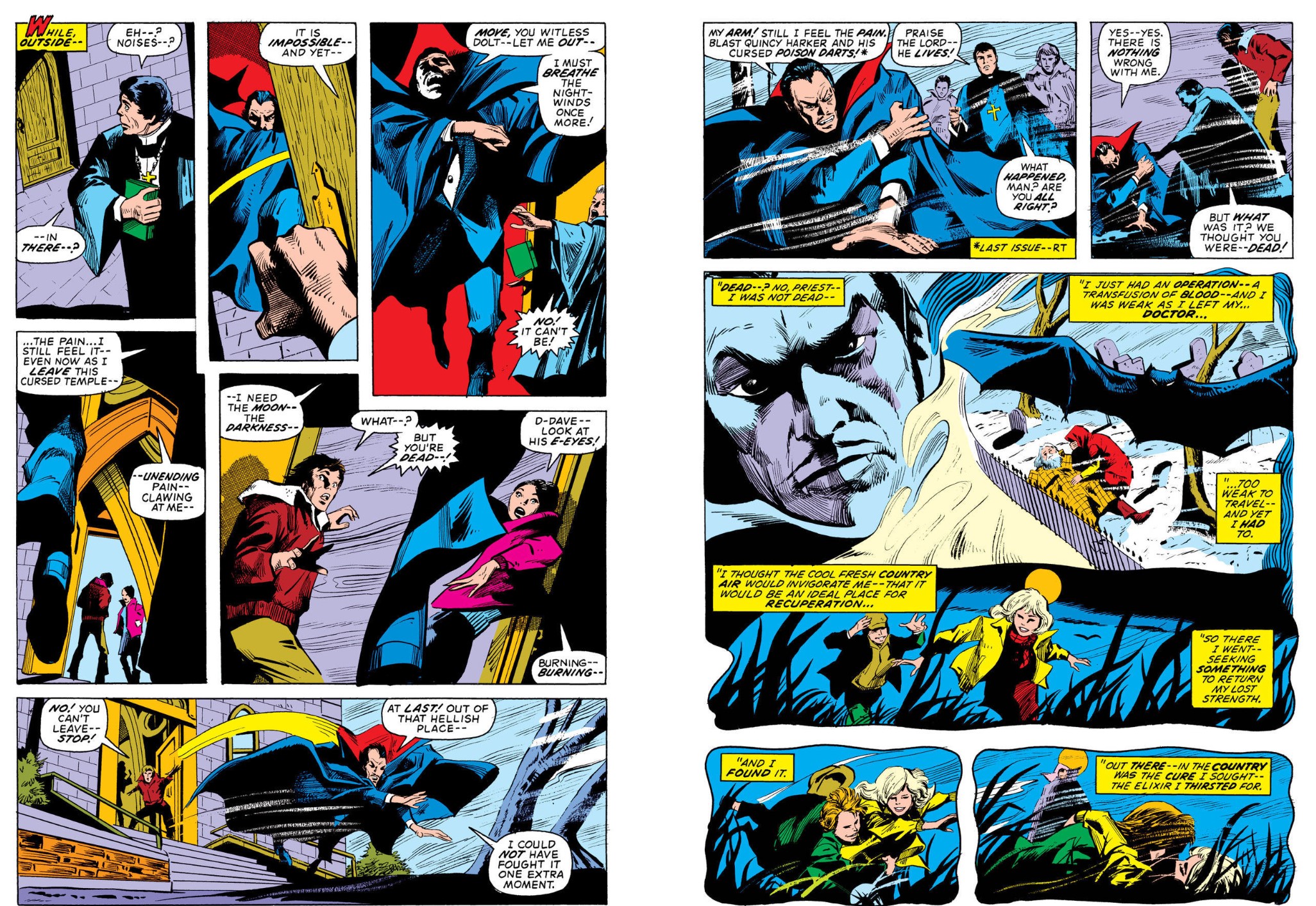
The colour chapters of our journey conclude with the introduction of what was frankly a daft idea but which was transformed by later writers in a mega-selling character-concept. Not here but soon, readers discovered a mouthy Jazz musician was immune to vampire bites (yes, I know, how feasible is it to be immune to bleeding to death?) whose mother was killed by a vampire whilst he was being born…
Released at the height of the movie “Blacksploitation” phenomenon, The Tomb of Dracula #10 was cover-dated July 1973 and introduced a hip, cool dude who played sax in nightclubs when not butchering Vamps and Fangers. Inked by Jack Abel, ‘His Name is… Blade!’ sees the wooden-knived wonder save dockside teens from Dracula’s ever-growing legions before rejecting a team-up plea from Harker. The rude refusal is a waste of breath as the object of their lethal desires is long gone, having already joined the sybaritic cruise of billionaire Garbiel Trulaine who has spiced up his voyage of Showing Off To Rival One-percenters with a unique guest and showpiece.
To their horror they all soon realise that money isn’t everything…
All but too late, Blade arrives to destroy Dracula but must settle for Clifton Graves and scuttling the Count’s scheme to swell his ranks and coffers, before we neatly segue into the Abel-embellished tale of ‘The Voodoo-Man!’ wherein Dracula’s desperate attempt to outfly the rising sun and reach a coffin stashed in Surrey Forest(!) gives way to some plot thread laying. Safely ensconced on native soil again, the Count considers further punishing the biker gang of Lucas Brand who had the temerity to attack his betters…
That thug is currently employed by iron-lung-entombed grudge-holder Jason Faust, tasked with torturing and killing three people who thwarted the paralysed potentate. The method is what is most important: Brand must use a hex doll and long sharp needle. However, Fate throws Brand to his own unsuspected tormentor when the proxy-killer attacks Faust’s third and final target… Quincy Harker. Dracula chooses to defer vengeance on his oldest enemy and instead play a cruel jest on the pawn he already has plans for…
Although painfully dated in places and cripplingly afflicted with what Americans thought British (and Transylvanian!) people sounded like, the power of the tales and especially Colan’s clearly inspired visualisations make these early exploits unmissable comics. Fans clearly agreed as the title spawned many, spin-off and guest-shots. Once Colan & Co completed the 70-issue series (plus all those extras) Comics Bulletin (2010) judged the result as #5 on the Top Ten List of 1970s Marvel comics…
As previously stated, an adult-oriented adjunct iteration was launched to capitalise on the comic book’s success. Dracula Lives! #1 coincided with the release of ToD #8, sporting a cover by Boris Vallejo and comprised of articles, photos, new comics and horror reprints.
The Contents page and editorial ‘Dracula is Alive and Well and Living on Madison Avenue!’ here join with house ads, recaptioned monochrome classic movie stills prior to black, white & red comics novella ‘To Walk in Daylight!’ as Steve Gerber, Rich Buckler & Pablo Marcos probe the Count’s past. The result finds Dracula prowling 19th century Vienna in search of an alchemist who claims to have a cure for the Undead’s fatal aversion to sunshine…
A grisly next issue ad precedes a selection from Dracula Lives! #2 with a cover by Penalva.

A Contents page, more funny photos precede a stunning historical yarn by Wolfman & Neal Adams. Set in 1459, ‘That Dracula May Live Again!’ observes how heroic Prince Vlad of Wallachia falls to Turkish invaders and why all-conquering Lord Turac came to regret leaving his broken trophy with vampiric gypsy Lianda. Origin done, more ads herald the contents of Dracula Lives! #3 (October 1973) where another Adams cover, Contents page and Movie Still continues the origin saga, as bereft of family, newborn vampire Vlad meets current king of the Undead Nimrod. Crafted by Wolfman, John Buscema & Syd Shores, ‘Lord of Death… Lord of Hell!’ reveals exactly how the proud noble became ruler of the dark legions, after which one last next issue ad brings the comics to a conclusion.
However, more treasure lies in store. As well as covers throughout by Adams, John Severin, Gil Kane, Palmer, John Romita, John Buscema & Frank Brunner, bonus materials include Thomas’s original plot synopsis for ToD #1; Colan’s try-out submission, 13 pages of original art, covers by Colan and Adams, Kane & Palmer cover #5, plus editorial alterations on this always contentious and worrisome title. There’s also Colan’s 1992 cover for The Savage Return of Dracula and a truly massive biographies section.
Beginning in a rather muddled, undirected and opportunistic manner The Tomb of Dracula developed under the guidance of scripter Wolfman and sublime artist Colan – especially when inked by Tom Palmer – into one the most celebrated and popular comics series of all time: one able to be subtracted from its conjoined continuity to stand alone as a classic of horror fiction. By today’s standards these are oddly coy horror stories for a generation born before “video nasties” and teen-slasher movies, so it’s unlikely that you’ll need a sofa to hide behind…
© 2021 MARVEL.
Win’s Christmas Gift Recommendation: Magical unrealism… 9/10
Comics master José Ortiz was also born today, in 1932. For more of us on him, you can go to The 10,000 Disasters of Dort or The Thirteenth Floor volume 01.
